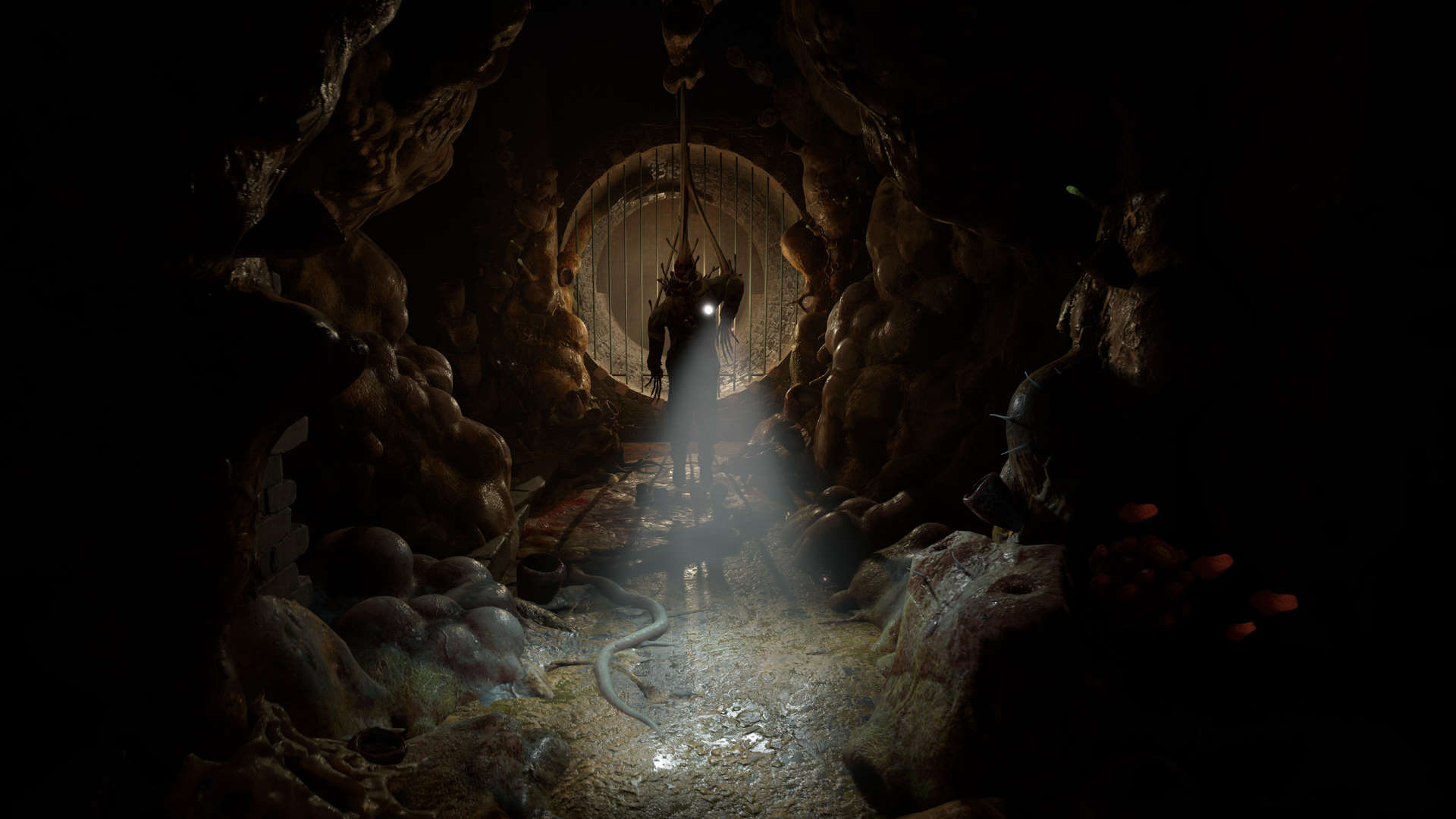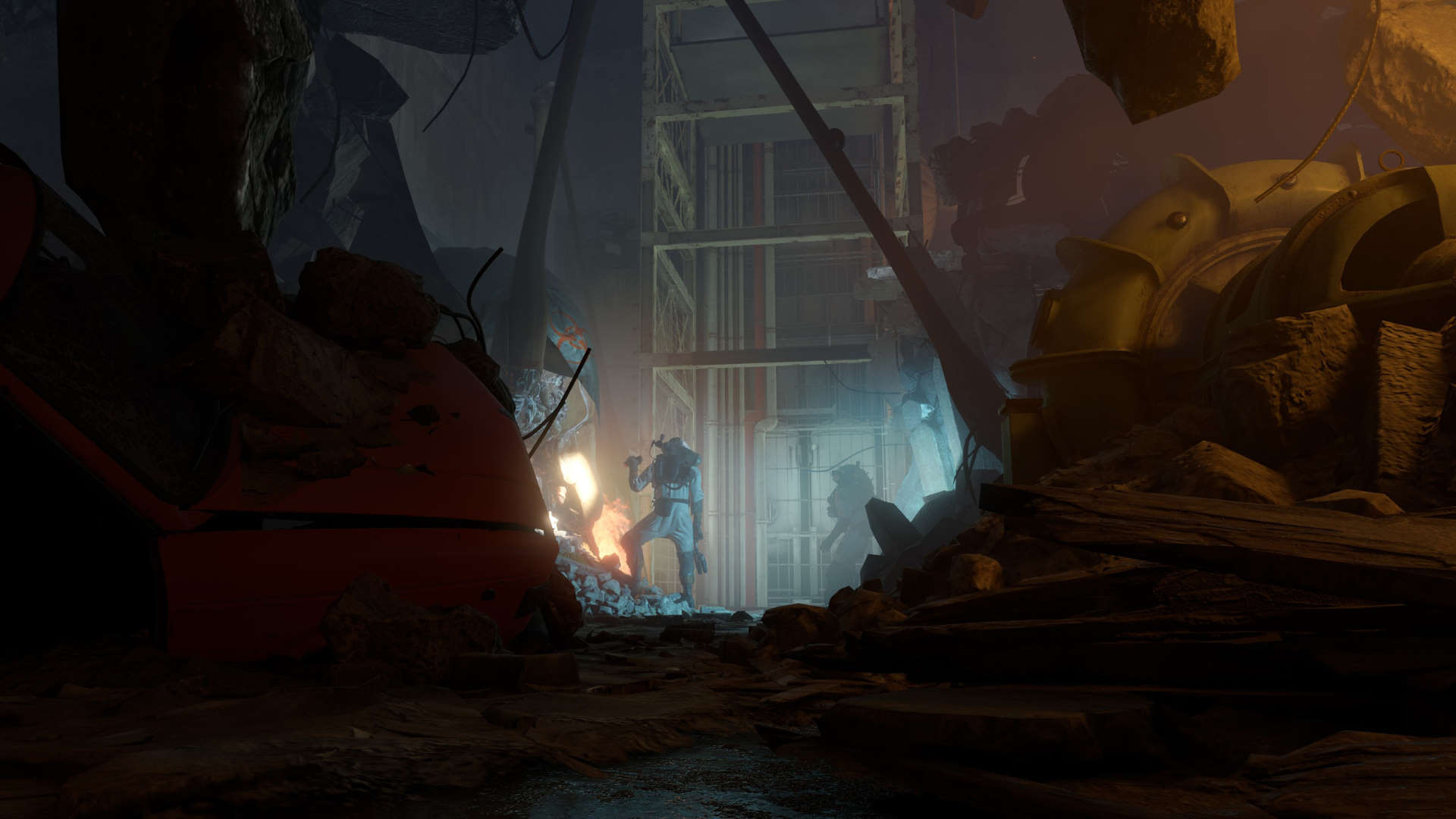If you want a truly terrifying Half-Life: Alyx experience take it outside in the dark
Modern gaming laptops mean VR gaming can go anywhere, even tethered to a PC.

I lasted 15 minutes. That's not the name of my sex tape, that's how long I could stand to be outside in my garden playing Half-Life: Alyx last night before I thought I might actually soil myself. A foolish errand, you may think, but I have been stuck inside for the last couple of weeks and needed to somehow marry my burning desire to be a bad-ass soldier in the human resistance like Alyx Vance with an unfamiliar need to be outside.
That's honestly a weird feeling for a borderline recluse like me. Normally I'd happily shut myself away for days on end playing a great game—and Half-Life: Alyx is undoubtedly that—but as our lockdowns have been forced on us for an indeterminate amount of time I'd wager there are a whole lot of weird feelings bubbling up inside.
Generally my gaming time is limited to when my wife and wee baby are tucked up in bed. So I generally don't sleep a lot. And having spent the best part of half an hour spooling out the extension cords and setting up my PC and Rift out in my moonlit garden I had hoped to spend a little longer than 15 minutes flailing around in VR with zombies, headcrabs, and assorted Combine goons.
But the sheer sense of presence Valve has imbued its game world with, and the foreboding atmosphere the soundscape engenders, meant that every distant noise or whisper of real-world wind had me quickly lifting up my visor to make sure that no-one (or nothing) was creeping up behind me.
So much of Half-Life: Alyx is conducted in the dark, in twisted, corrupted corridors. It's horror as much as it is sci-fi action. And what is already an incredibly intense experience becomes even more so when there isn't that baseline feeling of safety you get from gaming in an enclosed space where you can control who enters.
I'm not saying my garden is often filled with intruders, but the fence to our neighbours place came down a few years back and I never got around to putting a new one in place. Deserted, suburban Bath is also a surreal, creepy place right now, and that definitely didn't help with the complete vulnerability I felt strapping myself into the Rift, dancing with the devil in the pale moonlight.
It certainly added a frisson of peril to proceedings, and the extra space afforded by gaming in my clutterfree garden meant that I had a lot more room to thrash around in. But was all the effort, perspiration, and terror worth it? Arguably not. The whole experience speaks to the combined pleasure and pain of virtual reality gaming, especially on the PC.
Keep up to date with the most important stories and the best deals, as picked by the PC Gamer team.

The fact I could take advantage of the extra space my garden affords, as opposed to the cramped rooms of my terrace house (Netflix lies), is testament to the power and utility of a modern gaming laptop. Mobile machines are absolutely the best kinds of PC to use as a base for your virtual reality setup and, because of the design of today's notebook hardware, you're gaming silicon barely misses a step compared to its desktop brethren.
And, the way the gaming laptop scene is going, even a modest notebook is going to be able to deliver the sort of performance that will nail VR. With Nvidia launching the Super variants of its RTX graphics card it's also dropping the price point of its RTX 2060-based machines. That means we'll actually get $999 gaming laptops with RTX 2060 graphics cards inside.
Using a desktop PC means you need another monitor, as well as a keyboard and mouse in place to be able to set up and use a VR headset. With a gaming laptop you've got all that built into a portable system which allows you to place your virtual gaming space anywhere you've got access to a plug socket. Thankfully I've got an outside power-point ostensibly for the lawn mower, but mostly just for a WiFi extender or this sort of foolish, laptop-based adventure.
You do still need to game at full power, after all.

The way current-gen virtual reality hardware, and Half-Life: Alyx itself, makes you feel is also quite unlike anything else in PC gaming. Though sometimes you may not want it to be quite that real, or to feel that discomforting. And, oh my lawd, setting up virtual reality is a constant pain. That's why we recommend the Oculus Quest in our list of the best VR headsets; it's as close to pick-up-and-play as virtual reality gaming gets.
And even though the OG Oculus Rift is a comparative doddle to setup—you only need three USB ports and a HDMI to get up and running—you still have to configure the sensors and Guardian limits each time you start somewhere new.
I'm sure braver humans than I could endure the nerve-shanking experience for longer than I, and if you really want to feel the wind in your hair as well as the headcrabs then I heartily recommend taking your VR setup outside.
Doing so at night will mean fewer people are likely to see you, and you'll have a little spiky edge to your gaming sesh too. Me, well I'm only going to be doing so again when there's bright sunlight outside and my faithful cat standing guard near my helpless self.

Dave has been gaming since the days of Zaxxon and Lady Bug on the Colecovision, and code books for the Commodore Vic 20 (Death Race 2000!). He built his first gaming PC at the tender age of 16, and finally finished bug-fixing the Cyrix-based system around a year later. When he dropped it out of the window. He first started writing for Official PlayStation Magazine and Xbox World many decades ago, then moved onto PC Format full-time, then PC Gamer, TechRadar, and T3 among others. Now he's back, writing about the nightmarish graphics card market, CPUs with more cores than sense, gaming laptops hotter than the sun, and SSDs more capacious than a Cybertruck.

